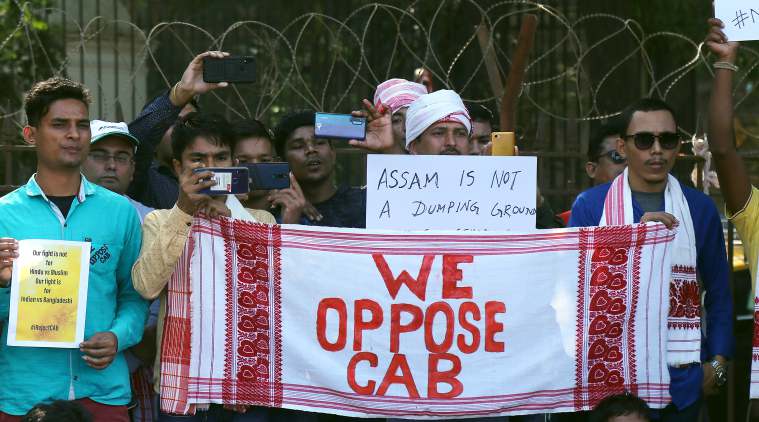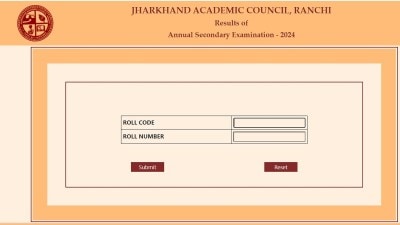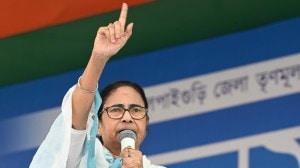- India
- International
After one month of CAA protests, key question for both BJP, Oppn: Will protests percolate below the top soil?
While the BJP and the Centre talk down the protests, brush it off as choreographed and avoid any engagement with the protestors, the Opposition senses an opportunity to rattle a government that returned to power with an enhanced majority.
 Hundreds of students and homemakers continue siting agitation, shouting slogans against CAA, NRC. (Express Photo by Partha Paul)
Hundreds of students and homemakers continue siting agitation, shouting slogans against CAA, NRC. (Express Photo by Partha Paul)
One month into the protests against the new citizenship law and the proposed NRC, the political establishment is split right down the middle on their nature and impact. While the ruling BJP and the Centre talk down the protests, brush it off as choreographed and avoid any engagement with the protestors, the Opposition senses an opportunity to rattle a government that returned to power with an enhanced majority barely seven months ago.
The protests themselves have travelled quite some distance in a month. They have got wider; the violence that marked some of them has abated. But political actors on both sides say the protests need more ground to cover and stitch a broader coalition before they can grow into a force those in power cannot ignore.
Said a senior Opposition leader: “Of course, it is powerful and helpful (to us) that there are peaceful protests against the Government but whether they have or whether they will percolate beyond the top soil, move from classes to masses, is the key question.”
The answer to that is elusive but a section of the Opposition is quickly moving in. The Congress Working Committee met on January 11, the CPM Politburo issued a statement on January 12, leaders of 20 Opposition parties came together on January 13 to support the protests and these parties have begun coordinating their next steps. The Delhi Assembly results early next month and the Opposition states’ stance towards the National Population Register in April appear two crucial milestones that will test the shape and resolve of the Opposition campaign.
In contrast, the government signals it is unruffled. To that end, the BJP has started a massive door-to-door campaign and a set of public rallies to underline that there is popular support for the law. Its confidence comes in the wake of a blistering ideological push soon after it returned to power in 2019.

Criminalising Triple Talaq, toughening UAPA, stripping Jammu and Kashmir of its special status, all happened in the newly constituted Lok Sabha as the Opposition was in disarray, failing to register defiance even in the Rajya Sabha. And then came the Citizenship (Amendment) Act which fast-tracked citizenship for non-Muslims from Pakistan, Afghanistan and Bangladesh. It was amid this sense of resignation in the Opposition that the AMU and Jamia protests came as a pushback from students.
 During a protest against the Citizenship (Amendment) Act at Red Fort in New Delhi. (Express Photo: Amit Mehra)
During a protest against the Citizenship (Amendment) Act at Red Fort in New Delhi. (Express Photo: Amit Mehra)
Indeed, the students’ reaction was in sharp contrast to that of the Congress which dragged its feet after it announced a nationwide agitation on the economic slowdown — announced first in mid-September, deferring it to mid-October, postponing it to mid-November only to hold it in December with a rally on December 14.
The ruling BJP, too, was taken by surprise.
Prime Minister Narendra Modi was first off the block as he referred to “clothes” of the protestors; 20 were killed amid the UP police crackdown on protesters in UP — but these seemed guided more by the electoral demands of Jharkhand.
However, with protests spreading, BJP began working on a response to deal with this as a political challenge. It decided to launch a mass contact programme and the Prime Minister publicly read down Home Minister Amit Shah’s previous assertions on a nationwide NRC at his rally in Ramlila Grounds.
Politically, the party knocked the protests as an orchestrated campaign by those who had lost electorally — Congress, Left, AAP, TMC among others — barely six months ago. Additionally, it went into an overdrive to delegitimise them by amplifying incidents of vandalism. Given that protests initially drew in large number of members of Muslim community, the protests, the BJP said, were by and for a “varg vishesh” (specific community).
But over the last one month, the protests, too, have crossed two important markers that open up opportunities for the Opposition, its leaders said.
First, images and videos of the protest that were dominated by Muslims — flagged by several BJP members, including the PM — have given way to those that show a mixed gathering, especially in cities and towns. Also, demonstrations in more campuses and cities — from IISc to some IIMs and IITs — have countered the impression that it’s just a New Delhi event. That prominent faces from popular culture, especially cinema, have lent their support has struck many a chord with the young.
Second, the initial violence has given way to peaceful demonstrations with the Tricolour and the Constitution the omnipresent symbols. The assurance of absence of violence has opened up space to draw in more people into the protests, as in Shaheen Bagh in Delhi, and similar protests in other cities.
“Hamla chahe jaisa hoga, haath hamara nahin uthega,” is a common refrain invoked by veterans of 1974 movement about the pledge administered by JP to underline how non-violence is crucial to success of the protests.
Veteran politicians who were part of the JP movement stress the need to shed the impression that the protests are confined to students of a particular ideology in a few top-ranking universities in the capital. They point to how a free-Kashmir placard in Mumbai was quickly seized upon by the ruling party social media brigade to question the motives of the protests. And underline the need to signal a wider social support base for the protests.
They highlight how socialists, championing the peasants and OBC communities, and the Jan Sangh closed ranks to mobilise anti-Congress sentiment and pitchforked student leaders (like Lalu Prasad Yadav) to draw in the masses.
 Assamese people staged a protest at Azad Maidan on Saturday. (Express Photo: Nirmal Harindran)
Assamese people staged a protest at Azad Maidan on Saturday. (Express Photo: Nirmal Harindran)
“The anti-Congress mobilisation in 1967 and 1974 was anchored in support from the the peasant and OBC communities. That is not the case here. These protests will have a hard-time de-linking it from its association with a religious community (Muslim) which has the potential to polarise against the opposition,” said a BJP strategist.
“See, there will be ups and downs. Questions about consistency and sustainability emerge naturally. It is in the second phase where the issue is about maintaining its consistency and sustainability. If a movement crosses this phase, the mobilisation becomes very big,” said former JNUSU president Kanhaiya Kumar. He attributes curbs on student politics across the country as a major hindrance against campus coordination at the national level. He, however, feels that a coherent narrative can appeal to a larger audience.
“The attempt should be made to make a central narrative. That this government is on the backfoot on economic issues and is pushing hate-driven programs to ensure that people do not ask economic questions while they continue with their divisive agenda,” said Kanhaiya.
Some Opposition leaders sense that there is a potential in these protests to catalyse a larger protest on the economy given deep anxieties among the young. The BJP, however, rejects this.
“These protests do not have a larger perspective at all. You need to have a good cause for a movement. You cannot run a movement on the basis of a misinformation campaign,” said Union Minister Ravi Shankar Prasad, an activist himself from 1974 student movement. He alleged that there is an orchestrated campaign by those political groups who lost elections in 2019.
The other issue, leaders from Opposition ranks, concede is the absence of a credible face to consolidate the ferment among students. Every political actor across the divide, in this context, recalls how JP galvanised the student protests into a powerful political force against Indira Gandhi. Some leaders suggest that the underlying issues of anxiety are sufficient to sustain this movement — and movements, themselves, have a tendency to search and find their own leaders.
Apr 19: Latest News
- 01
- 02
- 03
- 04
- 05






































